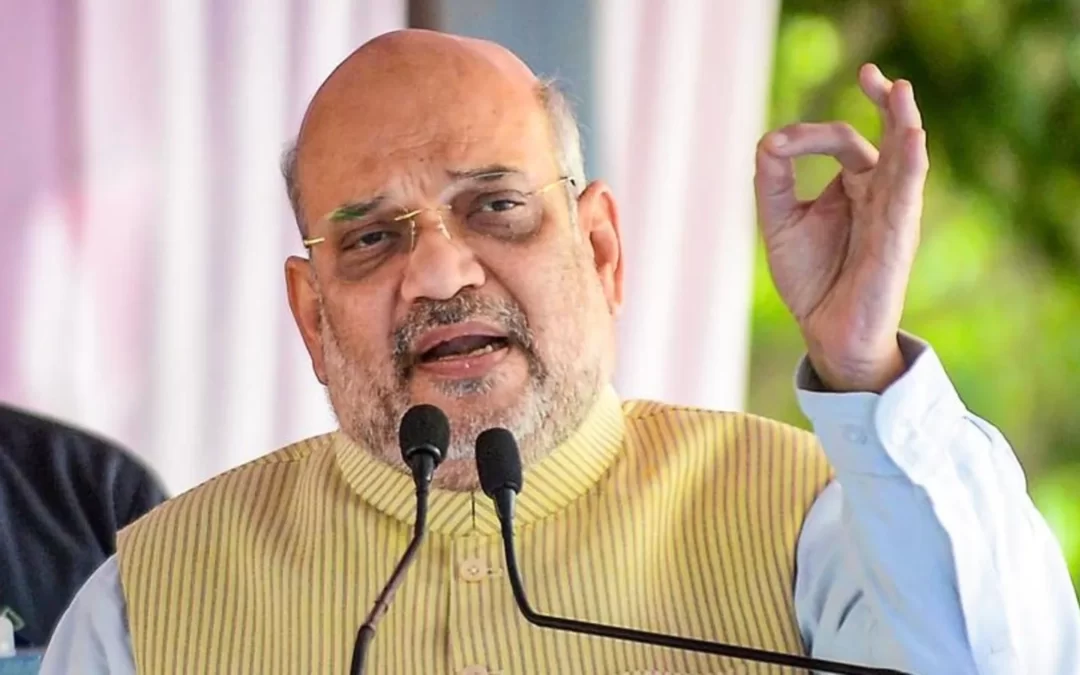Amit Shah ,Union Home Minister
“For the first time, we have also created a National Disaster Risk Management Fund at the national level with ₹68,000 crore,” revealed Amit Shah
New Delhi: Union Home Minister Amit Shah said over the past two years, workshops of all agencies related to relief and disaster management have been brought under one platform, adopting a ‘Whole of Government’ approach to create a think tank to work in a unified manner.
“This has helped address shortcomings and prepare the entire country to fight the disasters. Additionally, a multi-stakeholder approach and inter-agency coordination have been effectively achieved and this tradition should be further strengthened,” said Shah in his address at the annual conference of Relief Commissioners and Disaster Response Forces of States and Union Territories in New Delhi
Shah further said that due to climate change and global warming, the entire world is grappling with disasters today.
“In the past 10 years, because of the contributions of the National Disaster Management Authority (NDMA), the National Disaster Response Force (NDRF), and the Coalition for Disaster Resilient Infrastructure (CDRI), India is moving towards becoming a global leader in the field of disaster management.”
He highlighted that NDMA has done commendable work in policy frameworks, research, disseminating various training materials, developing apps, and overall coordination.
He said that in the past 10 years, Modi government has achieved significant milestones in the four areas of capacity building, speed, efficiency, and accuracy in disaster management.
“Not only has our capacity to handle disasters been increased, but it has also been enhanced and extended to the tehsil level,” added Shah..
“Attention has been given to speed, as saving lives during a disaster is of utmost importance. Efficiency has been improved through the use of cutting-edge technology and the dedicated approach of disaster response forces. Earlier, the approach was relief-centric, but today, the goal of ‘zero casualty’ has been successfully achieved, and the focus has shifted from relief-centric to a comprehensive and integrated approach, ” he stressed.
He emphasised the importance of anticipating future disasters, conducting advance research, compiling global ideas in this field, and adapting them to suit India’s geographical conditions.
Shah noted that the Modi government has transformed efforts from reactive to proactive and increased public participation. Now, the central government, state governments, and local units are coming together in an integrated manner to tackle disasters.
In the next 10 years, every young person in the country will be prepared to fight disasters with a spirit of service, stated Shah.
“Timely preparedness has been integrated with the calendar, a scientific approach has been evolved for active prevention and mitigation, and we have also achieved significant success in disaster risk reduction,” Shah explained
Shah said that from 2004 to 2014, the budget of the SDRF was ₹38,000 crore, which increased to ₹1.44 lakh crore from 2014 to 2024. Similarly, the budget of the NDRF was ₹28,000 crore from 2004 to 2014, which Prime Minister Modi increased to ₹84,000 crore today. Overall, we have nearly tripled the total budget from ₹66,000 crore to ₹2 lakh crore.
Shah said that this financial empowerment has been highly successful in bringing all our efforts to the village level. “In the 15th Finance Commission, compared to the 14th Commission, we have increased the budget fourfold. For the first time, we have also created a National Disaster Risk Management Fund at the national level with ₹68,000 crore,” revealed Shah.
He said that a lightning action plan also needs to be formulated soon. He mentioned that a strong action plan should also be developed to tackle heat waves, and its timetable should be based on the actual experience of heat conditions.
All Relief Commissioners should prepare a District Disaster Management Plan for every district in their state within 90 days, he suggested..

